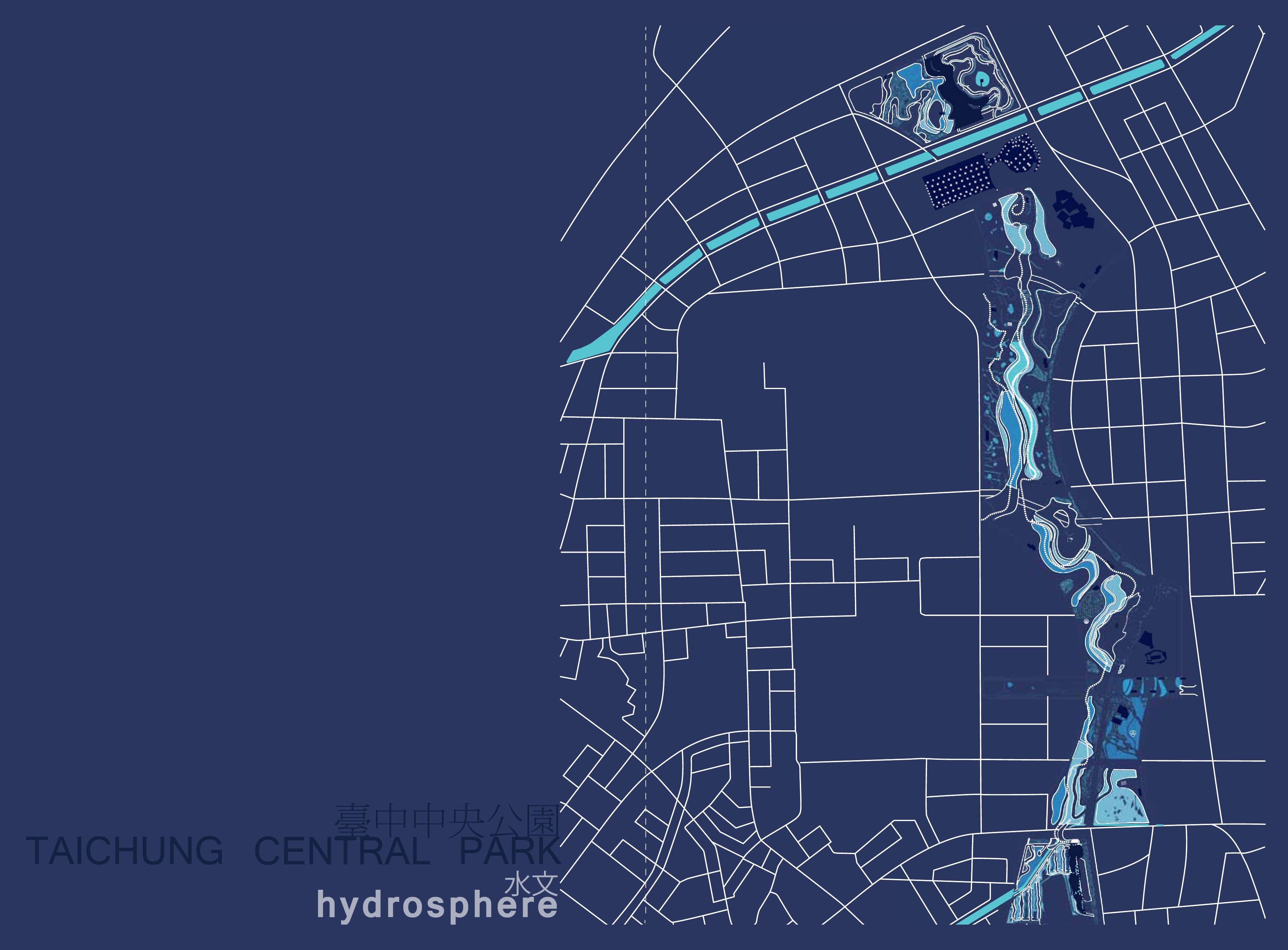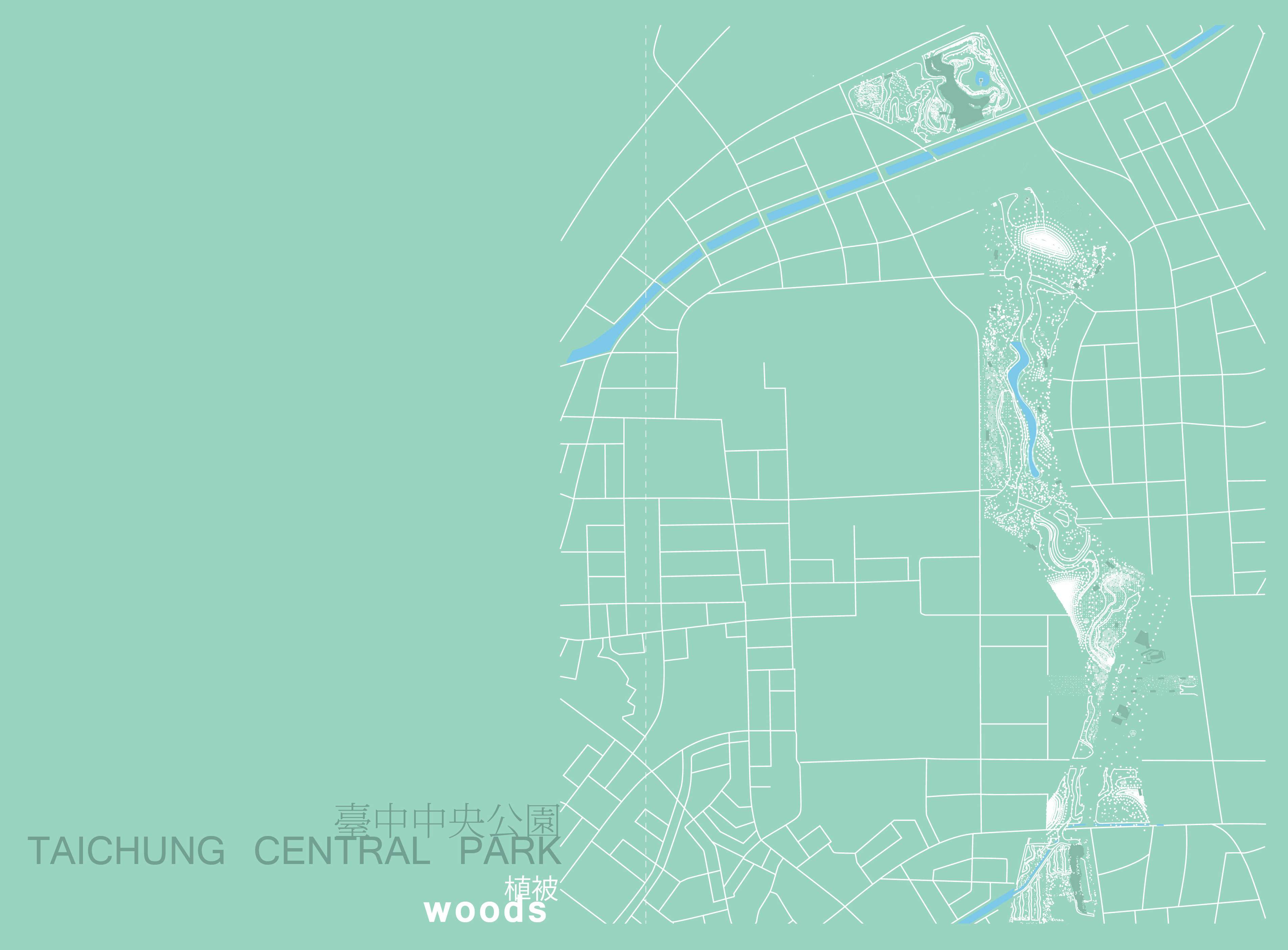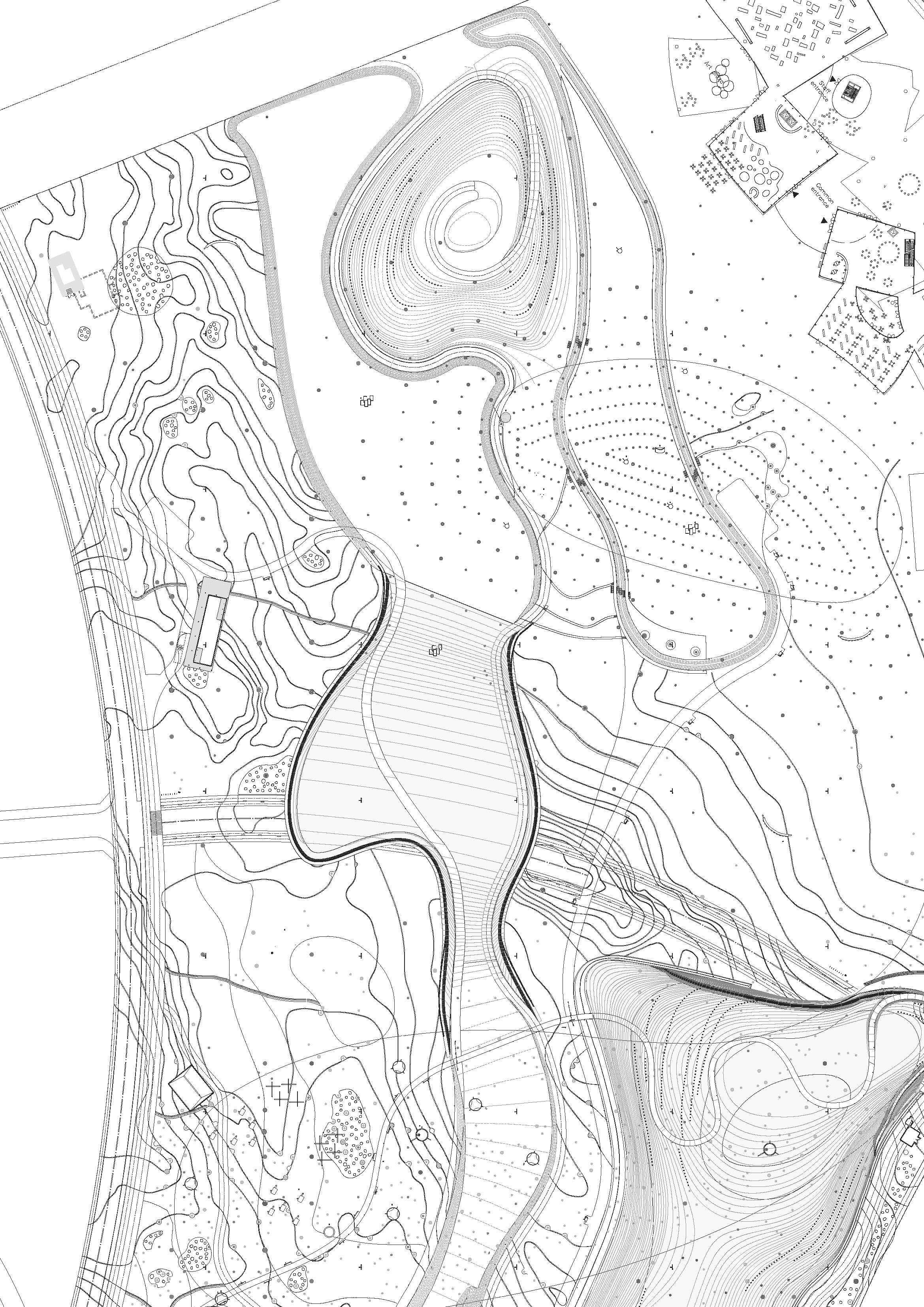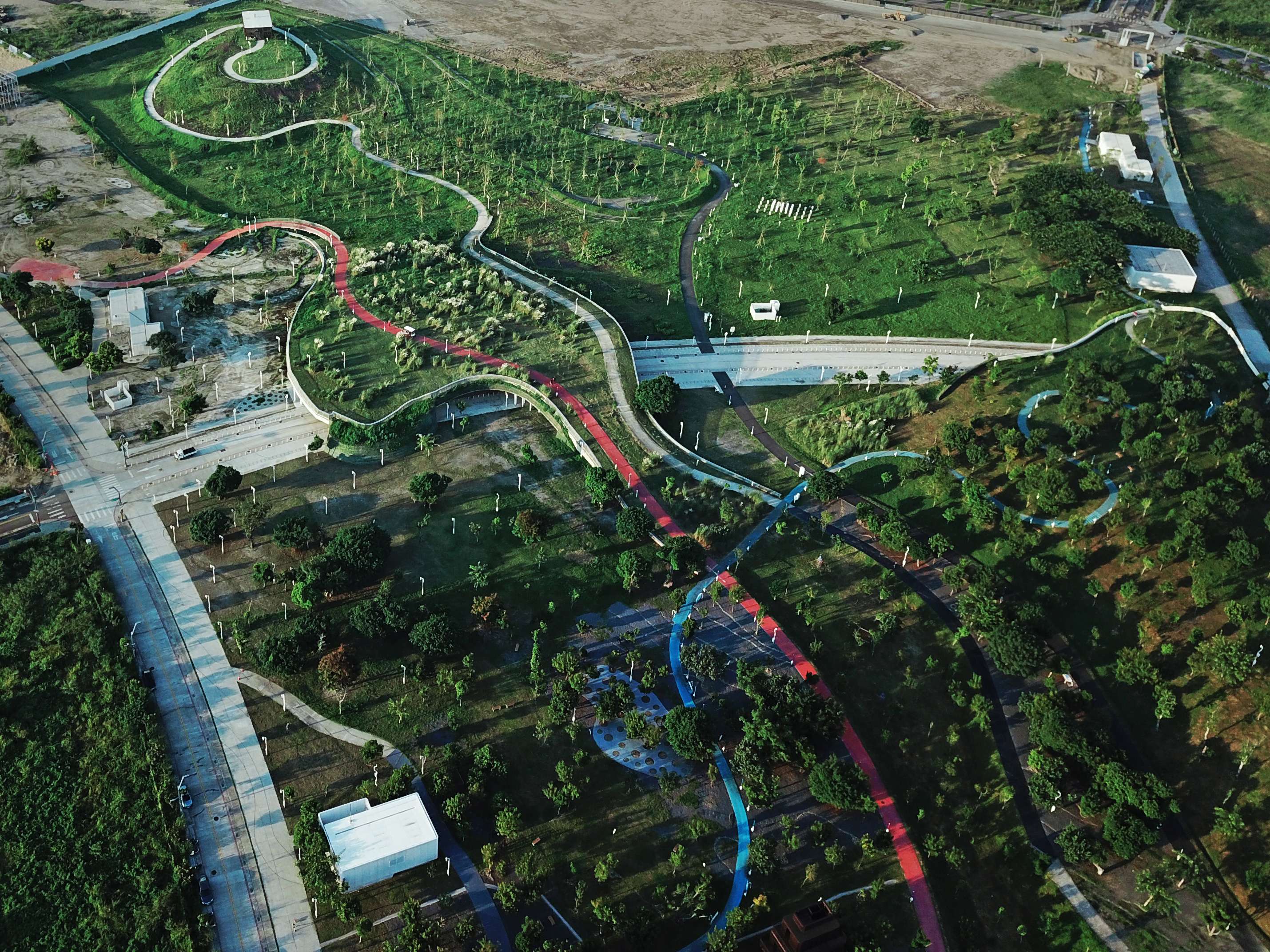
















































Phase Shifts Park (Central Park)
Situated beneath the Tropic of Cancer, the climate of Taiwan is warmed by the Kuro-Shio, one of the largest marine currents in the world. The island possesses a hot and humid tropical climate that counterbalances the mountain range that has a fresher environment. The target of Central Park is to give back the outdoors to the inhabitants by creating landscapes where the excesses of the climate of Taichung are reshaped.
The park use a specific language, one of universal reach in its capacity to relate the issues at stake at different scales. The geographic scale by the transformation of an airport into an urban landscape; the urban scale by the provision of unique cultural facilities integrated into a vast public terrain; the domestic scale in the porosity between districts that allow sharing of recreational opportunities. The interlocking of these levels is a unique achievement.
The design tools explore lithosphere design -water, topography, soil- combined with atmosphere design -heat, humidity, pollution. An overlapping mapping organizes a range of landscape distributing more comfortable ‘niches’ where natural and artificial tools are mixed, densified and dilated to highlight eleven comfortable resorts. The atmosphere performing is emphases by the lithosphere resources running with singular path through leisure’s lands, sports lands and plays lands.
The landscape pulls from North to South. Urban traffic is partially covered by infrastructures incorporated into the ground of the park. On the surface the hills establish a framework of vast horizons and continuities. Yet standing before them, they are also intimate and protective, for the staging of cultural events or regular shelter with Northern Lounge, Eastern Spiral, Middle Yard, Eastern Sky dome and Middle Clearings.
The park acts as a moderator: it proposes a variety of beaches, of gardens, of places and offer to the people of Taichung sensual experiences, partly based on the principle of senses of Rudolf Steiner, with twelve Fields -Speech, Taste, Hearing, Equilibrium, Thinking, Vision, Movement, Ego, Touch, Warmth, Smell, Life- providing visitors with places of gaming, meeting or just walk around powerful landscapes
The leisure’s lands, sport lands and play lands transform all that cross its vast, folded ground stretching. This topographic range allows residents to gain height and distance from their daily rhythms while being immersed in a living environment that is in constant formation. The ground introduces anfractuosities that protect passers-by from urban traffic while ensuring the continuity of ecological migration corridors, running 2.7km south to north, of animal, plant and human populations.
The maintenance center and the educational pavilions completed the cultural programming of the visitor center which is focused on issues concerning the planet earth.
It propose a unique public space where one can feel good, and can spend good time protected from the heat, where you can relax away from pollution, where you could have fun in the open air with your children. The park is the essential and necessary one today, of well-being, of comfort and sensual pleasures to bring to the inhabitants of big metropolitan cities.
Crossing, beyond appearances
Homo sapiens is an epiphenomenon among others, ahead of exploration and translation tools. It is urgent that it be placed back into the heart of its milieu, rather than existing in a divisive center using the ‘green’ mode to compensate for its abusive footprint. Our human form is just a passing phase, a transit of materials like many other transits – making this principle accessible would radically change our behavior on Gaia. It would be a revolution of another ‘nature’ than the historical, scientific or even ecological – the current ultimate slogan – revolutions, and could show up the advances in our tools as mere implosions of vanities. Becoming part of the landscape shows up our human form, a transformation among others. We are privileged to be able to test and play with these infinite scores, to highlight them, grounded in a reality adapted to our scale by our interpretation.
We are On the wire (Sur le fil), as Georges Didi-Huberman (2001) writes: "To work for others supposes reterritorializing one’s own work ... to migrate one’s work from one social field to another ... They (Les oeuvres sans queue ni chef) ... are created according to the reterritorialized economy of the ‘producers’ who aim not to impose their name (their brand) in the closed world of a single discipline, but more modestly to enable ‘the work itself to communicate’ from one world to another."
Central Park forges dynamic interactions between environments and the inhabitant. Facilities allow residents to become aware of invisible resources and to enjoy their value within an everyday lifestyle.
Beyond providing for the comfort, the ground folding is a tool parameterized according to porosity gradients. A little hole in the soil retains water, which in contact with oxygen germinates a seed, and little by little, a plant becomes landscape. The stratigraphy of soil is correlated to the stratigraphy of vegetation, which provides long-term indices of storm water runoff and air quality engaging resorts. Vegetative gradients ‘punctuating’ the park use the diversity of Taiwanese biomes to emphasize areas from the least hot, to the least polluted, to the least wet. Each series of vegetation and installations distinguishes a garden within the park. In addition to introducing a vast 'green lung' to the city, Central Park punctuates the main flows by 'encounters areas' where users share a common space for the expression of civic behavior.
A sensor mesh captures the park's environmental parameters of human physiological comfort (air temperature, solar radiation, wind speed, pollution particles or noise pollution). This data is then graphically transcribed, in real-time, by a smartphone application accessible by visitors who wish to align their schedules to a fluctuating but legible environment.
This "smart" park system is relayed by a maintenance center North of the site and a waste water treatment center in the South. The energy produced by the photovoltaic panels (1ha) in the North and South ensures the autonomy of lighting and other equipment in the park.
